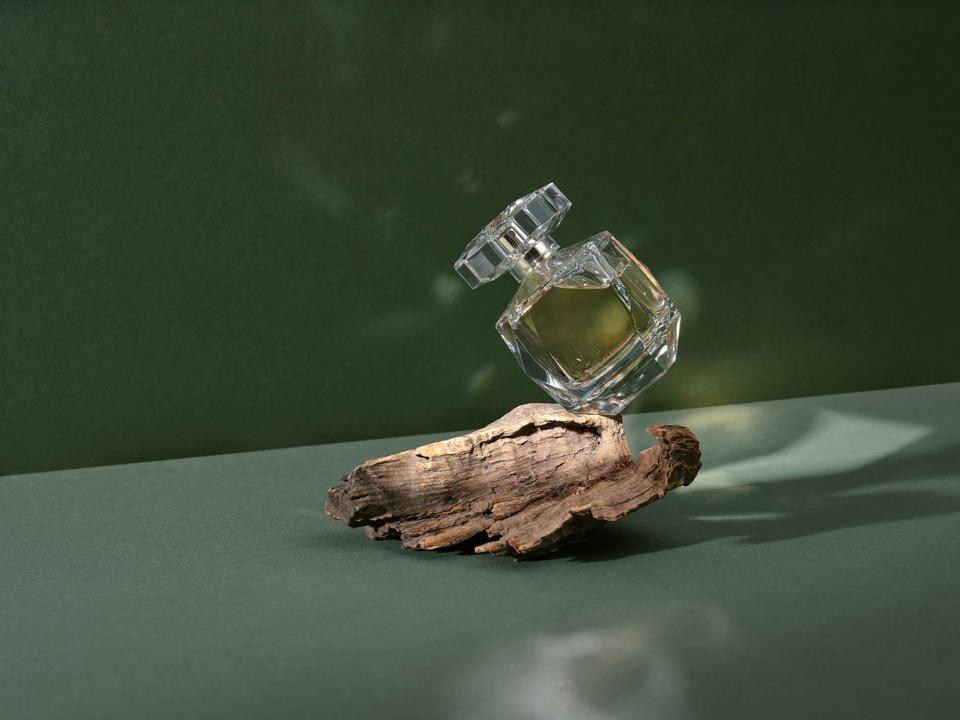All About Oud, the Smoky, Sensual Fragrance Note That Always Turns Heads
Fun fact: It comes from tree fungus.

Marc Tran / Stocksy
In many ways, fragrance can be compared to wine. You've got your topline categories— floral, oriental, woody, and fresh—much like your reds, whites, rosés and desserts. But once you dive in, to quote the great Cady Heron, "the limit does not exist."
As the weather cools down, it feels only natural to reach for woody fragrances. And one woody note, in particular, is bound to turn heads: Oud. Oud is one of the most expensive and rare fragrances in the world—and when we tell you where it comes from, you may do a double take. Keep reading for everything you need to know about oud, straight from perfumers Frank Voelkl and Jacques Huclier.
Meet The Expert
Frank Voelkl is a principal perfumer at Firmenich. He is the nose behind fragrances such as Dolce & Gabbana Velvet Amber Sun and Jason Wu by Jason Wu.
Jacques Huclier is a senior perfumer at Givaudan. He is the nose behind fragrances such as Gucci Guilty Pour Homme EDT and Mugler A*Men.
What Is Oud?
"Oud is a precious ingredient... released from the resin of the Angar (Aquilaria) tree," Voelkl explains. "When the tree falls ill with infection from fungi, it begins to release the precious resin—but, for it to produce true agarwood, it needs to be at least 25 years old. Once the tree has fallen, the bark [is] stripped and distilled." Yes, you read the above correctly: Oud is extracted from fungus.
Once distilled, the oil is used in some of the most expensive and popular fragrances.
What's Its History?
There is a rich history behind oud. Found in the forests of Southeast Asia and India, it has long been used by sultans. In the Middle East, oud is known as "black gold" Voelkl shares. "Historically, this prized ingredient has been utilized in many Middle Eastern fragrances for its unique ability to add sensuality and warmth to a fragrance."
"In the past, it was used rather sparingly in perfumes, but today we see oud more commonly," Huclier adds.
What Does It Smell Like?
Huclier describes oud as a woody, earthy, spicy, and animalic note. "It is very powerful, with a big trail and long-lasting results," he adds.
Voelkl expands the description, adding unique, warm, and leathery. "When utilized within a fragrance, it adds significant depth and sensuality, providing an air of mystery and intrigue for the consumers," he says.
From a non-perfumer point of view, I'd describe it to my friends as a late-night scent. You walk into your final destination of the evening, and there's that one person who instantly captures your attention just by their presence—to me, that is oud.
How Is Modern Oud Different?
"Modern oud, in the U.S., is a blend of natural and synthetic ingredients," says Huclier. Why? Think back to Voelkl's original note: To produce genuine oud, it must be extracted from an infected tree, 25+ years old, after it has fallen. The pattern of tree fungus doesn't always cooperate with mass demand for a scent, and thus, an alternative was born.
Beyond the physical supply, Huclier says synthetics can allow for the growth of the scent itself. "[Synthetics allow] a perfumer to bring new complexities to an oud fragrance because they can balance the characteristics with other facets to be more spicy, earthy, leathery, etc.," he explains. "Some of these complimentary notes could include cedarwood, patchouli, vetiver, saffron, and Akigalawood, a Givadaun captive with a spicy, woody olfactive signature."
How to Wear It
If you are intrigued by oud—but not quite sure how to wear the scent—the perfumers have got you covered.
For starters, a little goes a long way with this powerful scent. "Even a small amount of perfume containing modern oud has an extraordinary trail and an incredible signature," says Huclier.
The technical way we wear oud has come a long way, the perfumers add. "The action of wearing oud has evolved from traditional ways into how we wear it today in the Western market," Voelkl shares. "For example, in the Middle East, people actually sell pure oud bark, which is then burned, and people fragrance themselves through the fumes from the oud smoke and then layer with different fragrances. This is a method that has been done traditionally and until today."
"Little by little, oud [has] begun to become incorporated directly into the fragrances themselves as people began extracting it, and [this] how we see it in the fragrances we have here in the Western market," Voelkl concludes.
As for the perfumer recommendations? Huclier's favorites include V.8 by Map of the Heart ($195), Kilian's Love, Don't Be Shy Amber and Oud ($430), Ex Nihilo's Stellar Dreamers ($355), L'Artisan's Bois De Sables ($260), Parfum de Marly's Haltane ($410), and Tom Ford's discontinued Oud Minerale. "They leave a memorable impact with a unique, often sensual quality," he says.
The Final Takeaway
The perfumers' favorite thing about oud? The fact that this sacred scent has made its way here. "I think it is super exciting that we managed to take such a specific and particular note like oud, which was so strongly associated with Middle Eastern culture, and introduce it into our Western world," says Voelkl. "It shows how we have to be open-minded to all different cultures and techniques, and how these cultures and ingredients can travel across borders and be incorporated into different cultures and through different methods."
Up Next: The Most Popular Perfumes in the World, From France to Japan
Read the original article on Byrdie.

